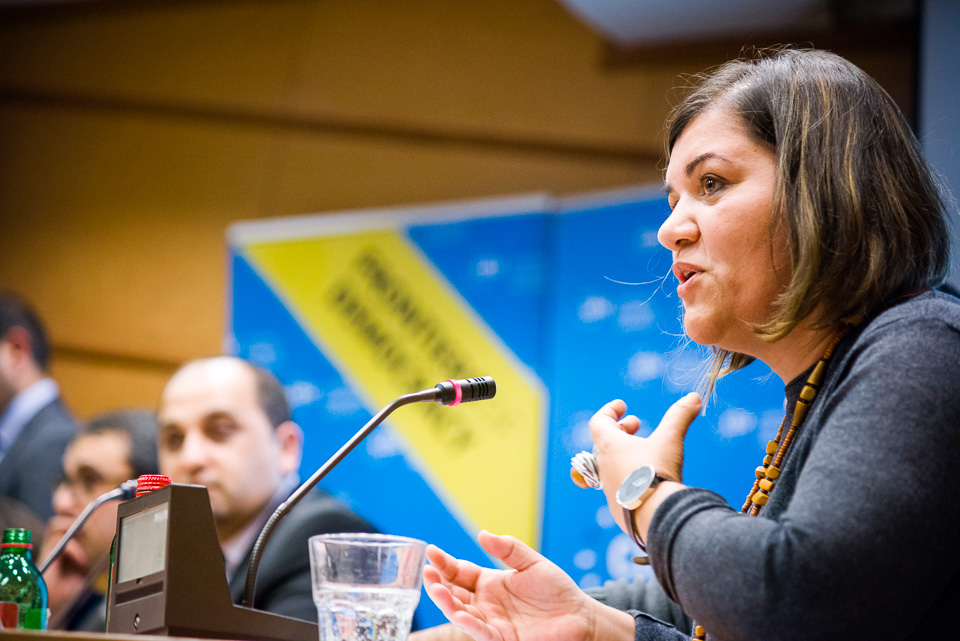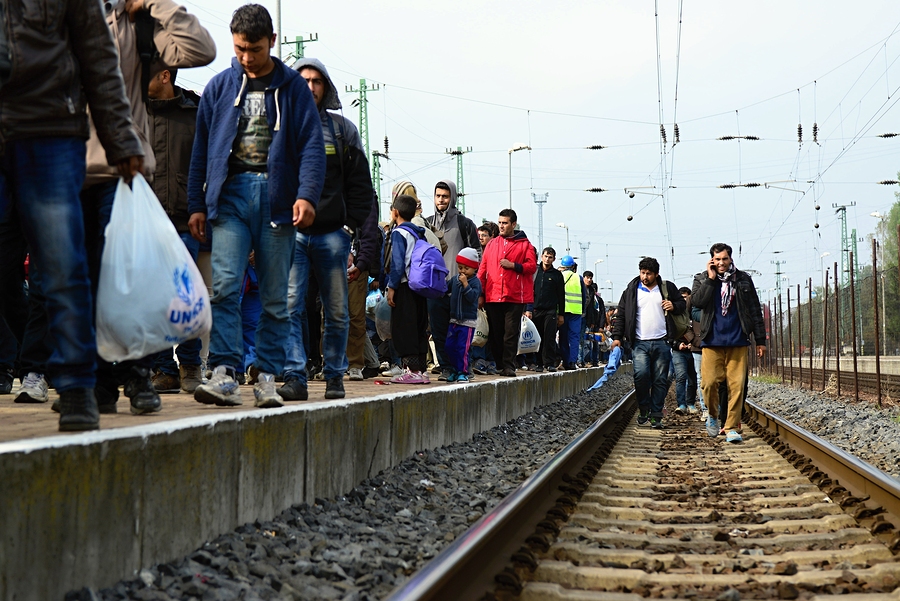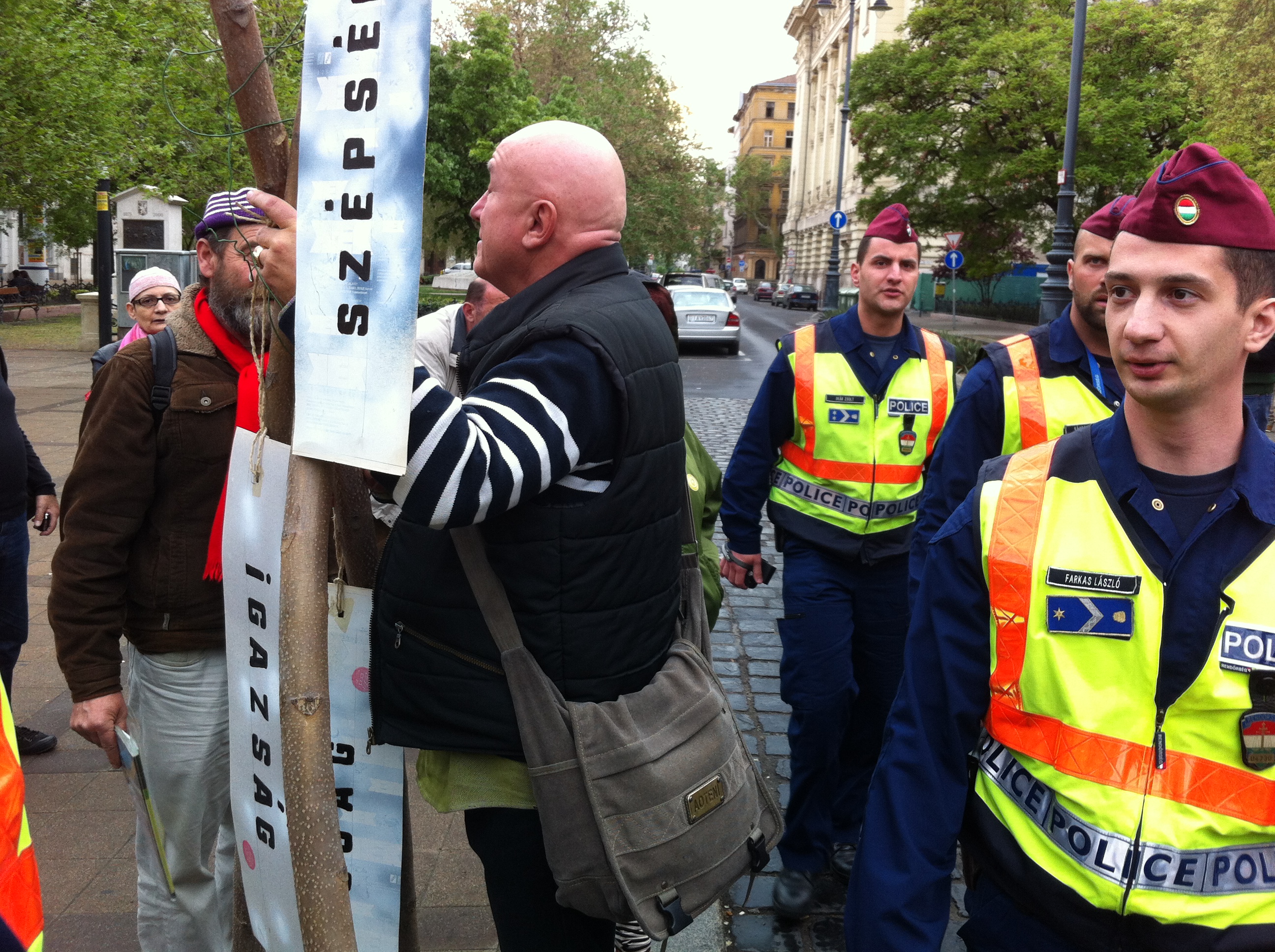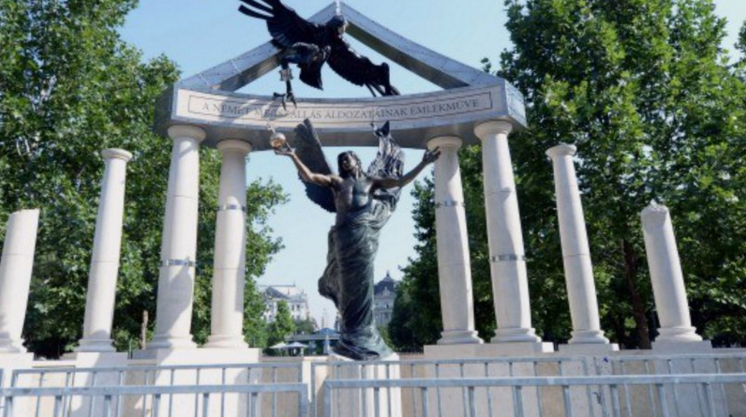
When our honest, contentious, eye-opening meeting was over, I was too preoccupied to post this. Here is what my colleague ended up writing about our INSIDE THE STRUGGLE conference, which was amazing.
http://www.ceu.edu/article/2015-12-14/fighting-racism-two-continents-ceu-conference-examines-us-civil-rights-movement

The hardest thing about living in Hungary is the official government ideology of hate. Lots of people in nearby countries also embrace Orban’s intolerance toward the refugees; the Polish ambassador told me last night that 80% of Poles said they would like Orban to be their prime minister, too! It isn’t difficult, living in this ugly atmosphere, to understand what happened to Jews and Roma people here during World War 2.
Fortunately good people also come from Hungary, although they are in the minority here, according to all the polls. When a thousand weary Syrian refugees walked along the M1 highway to Vienna, not trusting any more what Hungarian officials told them, villagers came out to feed them trays of pogacs, the traditional salty Hungarian pastries. During the height of the crisis at the train stations in August, many Hungarians resisted the official propaganda and threats of legal action against them, to bring food, clothing and blankets for the hundreds of thousands of refugees coming from the war zones in Syria, Afghanistan, and parts of Africa. Volunteers from Hungary and the CEU community (students from over 100 countries, including Syria, Afghanistan, Iran, you name it) developed, through Facebook, a Migrant Aid civil society response that has saved people’s lives.
Together they developed some clever hacks, like figuring out if you unplugged the Exit signs and Coke machines at the Keleti train station, you could find some electricity for the power strips that volunteers brought so the refugees can plug in phones. Phones? Yes, the refugees desperately needed to contact their family members, to use the GPS apps to figure out where they were going, to get information about what was safe and what wasn’t. Some news trucks also allowed them to use their generators to recharge batteries. CEU volunteers provided and staffed free Wifi hotspots, a flow of translators, sandwich-makers, and hardy souls who took sick and dirty refugees into their own homes, so they could bathe, eat and sleep before starting up again the next day.
Austrians braved criminal liability to drive across the border and pick up the most desperate cases, bringing them back for free, across to safety in Vienna. Hungarian, Bulgarian, Russian and other traffickers were hanging out at petrol stations along the route through Serbia and Hungary. Local taxi touts were charging 200 Euros to drive from Szeged to Budapest (where the refugees thought they could catch a train to Austria), a trip that should have cost a tenth of that amount. Hungarian media, which are in the thrall of the government, were told not to broadcast images of refugee children.
It’s funny that German anarchists were among the best organized volunteers who showed up in Hungary, providing food and rapid responses to the constant changes in policy that kept making things worse. The Hungarian government finally mobilized the Knights of Malta and one or two other officially sanctioned charities to help carry babies and refugees in wheelchairs across rural ditches in remote fields during the starless nights at the height of August’s crisis.
This may be the most documented movement of refugees in history; everyone in the train station wanted to show the volunteers their pictures, to share, across the language gap, exactly what they had already gone through. Now this swollen river of human misery is out of the headlines and sights of busy Budapest, because the new refugees have been diverted to march through a tiny corner of Hungary that is far from the capital. But we aren’t fooled. We are just working on cleverer ways to nudge the policy makers and deliver the essentials. Stay tuned for more reports, as hundreds of thousands more Syrians cross the Hungarian border, in hopes they can quickly leave this country that has officially told them they are unwanted scum, terrorists, and job-stealers. Official Hungary seems to have learned nothing from its own history and the Holocaust. It is profoundly ironic that Germany is now the promised land for these desperate people. Let’s hope a better solution can be found– before Germany’s official hospitality is used up, too.

My friend Seth Effron in North Carolina has been handed a dream assignment: figure out how to repurpose some campus buildings to help serve the cause of good journalism. Here is my dream for his project:
Create the one and only tech hub devoted to creating journalism apps that are actually in the interest of the journalists and the public, instead of the advertiser/propagandists or those simply measuring and promoting what is “popular” and “trending” on the Internet? In other words,use part of your space for hackathons or steady work where developers would make new apps or programs that would create:
–A better word processing/editing program than Word for text, plus affordances that enable linkages and embedded video/photos more easily, including CREDITS
–A true micropayments system so that people would pay pennies (dimes?) for articles, where the cost of processing the payment would be minimized so the payments could be truly low cost. This could help support the authors rather than the thieves like Huffington Post.
–A pedigree branding system for journalism pieces that is like a “good housekeeping seal of approval” or the logo for “free trade” coffee/chocolate, which would be signifying voluntary membership by journalists/content providers, asserting they are working according to certain ethical standards. This would help consumers find and value this content over less reliable content.
— an “origin” tag, brand or logo for each participating piece of information moving through the food chain that would enable viewers to know where it originally came from. It could be included in the branding tag (above), put on as a news flash/photo/video originates and that continues to be embedded in the news content as it works through the food chain
–tags, brands or imbedded logos that indicate some of the important sources of the info (tags that are links perhaps to the original documents/videos)
I kept hoping when I was managing a Knight Foundation Challenge grant at the MIT Media Lab that some of the students would be interested in such projects, but they were more interested in non-journalism tools and practices, building devices without much regard to the actual social need for their functions. Maybe in North Carolina Seth can turn that around, and start with the functional challenges to support good journalism from all sources.

Walking home today from an Easter Monday walk in Budapest, we unexpectedly came upon an artist, Tibor Szilagyi, trying to challenge the government’s “Germany Made Us Do It” statue project in Freedom Square. Tibor wanted to protest the government’s planned statue, which aims to absolve Hungarians from any Holocaust guilt.
Tibor’s art installation was three large tree branches formed into a “tree,” each carrying one word written on a white streamer: “beauty,” “truth” and “goodness.” Two police stood warily nearby, guarding the site. This has been a confusing assignment for them. Every day the government’s workmen try to build up the base of the statue, and every day Hungarian protesters politely deconstruct it piece by piece. The police video this illegal activity, but aren’t arresting people yet. They wait and watch as people like Tibor work to create a counter-message on the site, one that seeks to honor the 560,000 Jews, Roma and other innocents killed almost entirely by fellow Hungarians during World War 2. Hungary was Germany’s ally until near the end, when the government tried to change sides, as they saw the Axis losing the war.
Some, like Prime Minister Viktor Orban, argue that Hungary had no choice, because if it didn’t ally with Germany from the beginning, it would have been invaded, like Czechoslovakia, and the Jews would have been killed sooner. Hungarian Regent Miklos Horthy tried to protect the Jews, under this interpretation, and nearly succeeded until the end of the war, when the Germans marched in to Budapest, rounded them up and send them to Auschwitz. But this account overlooks the decades of official Hungarian anti-Semitic laws and activities, including willing Hungarian complicity throughout the war in creating Jewish and Roma slave labor camps where thousands died, episodes of rounding up Jews from the countryside, and killing them; and the wholesale theft of Jewish businesses, property and jobs well before the Germans took over in 1944. Hungary allied with Germany in World War Two to get back the lands it lost the last time they joined together, as allies in World War One. In the end, it was Hungarians who shipped the Jews off to the death camps, or tied them together and shot them into the Danube in 1944. Only about 200 German troops were in Budapest at the time.
We were amazed to see how, in front of Tibor’s “tree,” the embattled scaffolding for the government’s statue has become a beautiful protest memorial of handmade signs, pictures, stones, and candles to honor the Holocaust dead. Someone placed two empty white chairs facing each other, to represent the lack of dialogue in Hungary about this painful history. Hungarians’ real roles are not discussed openly or honestly in most official textbooks; Holocaust guilt is not a widespread source of concern here. But the Fidesz government, to promote nationalist pride, has gone too far now, blaming Hungary’s German allies for everything that happened.
Tibor was taking the makeshift Freedom Square anti- memorial to a new level. The police decided today to call in reinforcements. Soon there were eight uniformed officers huddling around the artist. He smiled and chatted with passersby, while the officers looked puzzled about what to do. We were delighted to see the U.S. Charge D’Affaires, Andre Goodfriend, taking pictures of the scene and inquiring about what was going on.
We all took pictures, and, sensing that there was no violent confrontation in store, went home. If this shows up in the news here tomorrow, it will almost certainly be about a troublemaker who wanted to erect an illegal monument and disrupt the civil order. And it could well be about foreigners who don’t want Hungarians to be proud.
I hope Tibor is proud, and I would like to respect the pride of all Hungarians. But that would require that these whitewashing official historians face the truth honestly. That is the only way to build a future that can’t be torn down, plank by plank, every time a new government comes to power.

Today officially marks the 70th anniversary of the Hungarian holocaust. A few Hungarian government officials will put flowers by the Danube, where hundreds of Jews were tied together and ordered to take off their shoes. Only the first and last in the line were shot, but the rest, who were lashed to them, died by drowning as they were all pushed into the river. That way the Hungarian Arrow Cross government could save bullets.
Last night I watched as ordinary Hungarians, old and young, Jewish, Christian, dark, light, men, women, and children, worked nearby to stop the construction of a new statue in my Budapest neighborhood. This monument is a personal project of Prime Minister Viktor Orban, to blame Germany for the 560,000 Jewish, Roma and other Hungarian Holocaust murders during World War II. The international community has protested this statue, which denies that Hungary was Hitler’s willing anti-Semitic ally throughout most of the war. This memorial aims to airbrush away the fact that it was Hungarians, not Germans, who carried out most of the official roundups and murders here, after decades of laws discriminating against Jews. https://www.youtube.com/watch?v=XpFHbKbCCzc
Much has been made of the far-right party Jobbik, which did gain more than 20% of the votes in the April 6 election. But they are the only effective opposition party these days, so many of their voters came to them despite their neo-Nazi ideology. I am more worried right now about Prime Minister Orban’s victorious Fidesz party. They have adopted many of the worst aspects of Jobbik, under the guise of a “center-right” approach, and they are playing with fire.
The government delayed the statue project briefly before the April 6 election, but Orban began construction a few hours after his victory was assured. If ever anyone had the capacity to be magnanimous, it is someone who has just won re-election with a contrived two-thirds supermajority. But apparently Orban is not in a generous mood. He remains unconcerned that he is creating a “soft” form of Holocaust denial in the heart of the bloodlands where it occurred. These unhappy historical facts get in the way of his signature effort to help Hungarians be proud of themselves. In Orban’s world view, whatever goes wrong here has been the fault of the Turks, the Germans, the Russians, and now, the liberal West. Orban loves to beat up the EU, which gave Hungary 24 billion more Euros in support from 2007-2013 than Hungary provided back—and the USA. Hungarians, seeing this narrative every day in their media, believe Europeans and Americans are actively plotting to deny them their birthright and their pride.
It is part of an ugly pattern that everyone here–especially here!–should resist. It was this same approach that German’s Hitler and Hungary’s Admiral Horthy used, to blame conspirators for their nations’ ills. While Germany has moved on, being exceptionally clear about acknowledging the mistakes of its past, today’s Hungary has done the opposite.
It is such a waste. Hungary, which boasts a traditionally well-educated and hard-working population, could yet become a strong and admired country. Its geographical and political location at the crossroads of East and West could make Viktor Orban a world leader, brokering needed peace and economic agreements among Iran, Russia, and the West. Instead Hungary has lost the respect of international businesses and governments who are looking for a sound economy, based on the rule of law and relatively honest work. Orban nationalizes and blames others for Hungary’s bad reputation in the West.
Viktor Orban, who once was a dissident against the Communists in 1989, and won a scholarship paid for by George Soros, could have won his recent election fairly, because many people here like him, and the opposition was such a mess. But international observers have concluded that his Fidesz party was able to capture the “supermajority” with only 44% of the popular vote because they changed the election laws to favor their districts, their candidates, media access, new diaspora absentee voters, and much more. http://krugman.blogs.nytimes.com/2014/02/28/hungary-an-election-in-question-part-5/
One couldn’t even find posters for the opposition candidates, whose television spots were also effectively barred from the airwaves before the April 6 vote. What we saw everywhere was prime minister’s ubiquitous portrait, with the phrase: “Viktor Orban, Hungary’s Prime Minister,” and another poster depicting the opposition figures as clowns. I even got a text message on my cell phone on election day, reminding me to vote for Orban. That would have been illegal, of course. As a foreigner, I am not registered to vote here. The government apparently seized the phone companies’ customer lists to push out its partisan message. Opposition candidates did not have that option.
The police today are shooting video of every person dismantling each plank and metal piece of the statue. Once they are arrested or subdued, it is likely that in a matter of days, the statue will be rushed to completion. This huge project will dominate Szabadsag Ter, “Freedom Square,” home of the US Embassy (where Cardinal Mindszenty found asylum from the Soviets after 1956), the Soviet obelisk (thanking the Russians for defeating the Germans in 1945), dwarfing a lifesize Ronald Reagan statue (thanking the USA for helping to defeat Communism) across the park. The dismantlers will gain nothing for this act of rebellion, but their souls. It is particularly outrageous that the monument’s construction is undertaken during not only Passover and Easter week, but the 70th anniversary week officially remembering the Hungarian Holocaust.
While they have little gain, these protesting Hungarians have a lot to lose. The Fidesz government now seems to have virtually unchecked power. To be sure, Hungary is in the European Union, but only barely. It is moving farther and farther away from democracy and a market economy. I could be depressed, watching this regressive behavior, the predictable election results and the mass media here, which are afraid or unwilling to tell the truth. But instead I am impressed, deeply impressed, with these other people who are taking real personal risks in a state that is creating a new era of intolerance and autocracy. They don’t know what the government will do to them, but they are willing to take their chances.
We foreigners are watching, and will bear full and loud witness to what happens next.





